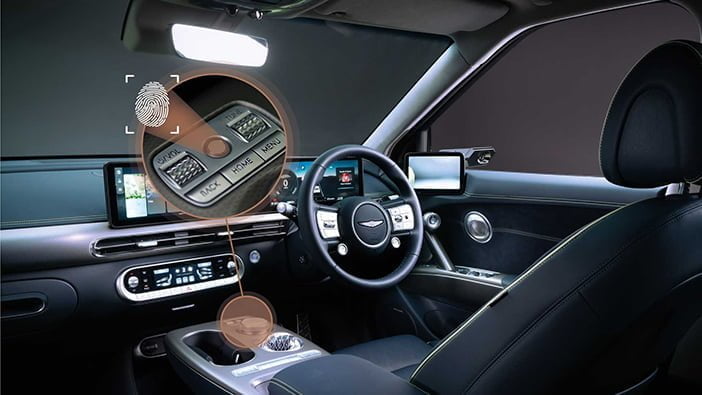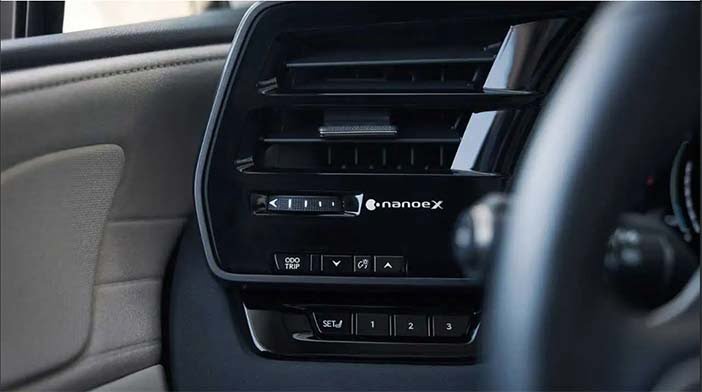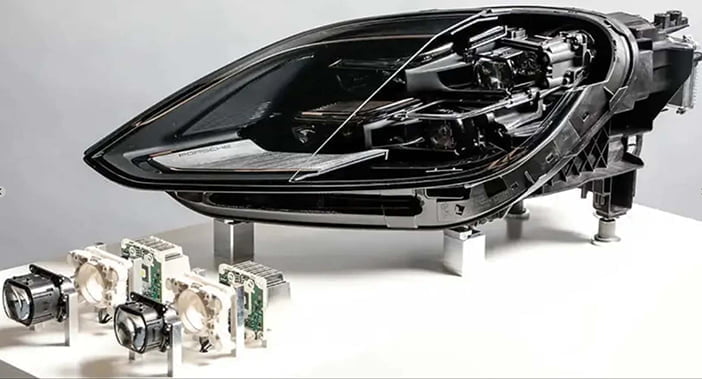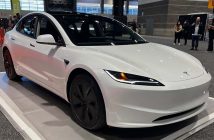+++ Those who choose not to obtain a COVID vaccination may pay for it come insurance renewal time thanks to a new study that found that unvaccinated drivers were more than 70% more likely to get into a severe car crash than the average driver. So, does this mean that the vaccinated are benefiting from 5G superpowers after all? No, the study authors say; this is merely an example of people exhibiting multiple types of risky behavior. The study, published in The American Journal of Medicine earlier in December, evaluated the accident reports and vaccination status of the more than 11 million drivers in Ontario, Canada, from 2021. During the period studied, 6.682 people were hospitalized following involvement in severe crashes; of them, 75% (5.000) were unvaccinated. When evaluated against other known conditions, the magnitude of the estimated risk (72%) was similar to the increase associated with sleep apnea, less than that associated with alcohol misuse, and greater than that associated with diabetes. “Our data do not explore potential causes of vaccine hesitancy or risky driving”, the study’s authors said. “One possibility relates to a distrust of government or belief in freedom that contributes to both vaccination preferences and increased traffic risks. A different explanation might be misconceptions of everyday risks, faith in natural protection, antipathy toward regulation, chronic poverty, exposure to misinformation, insufficient resources, or other personal beliefs. Alternative factors could include political identity, negative past experiences, limited health literacy or social networks that lead to misgivings around public health guidelines. These subjective unknowns remain topics for more research”. In other words, skipping a vaccination doesn’t actually make you more likely to crash your car; it just means that you’re more likely to be the type of person who would have crashed it anyway, which is why your auto insurance company might take an interest in your vaccination status, especially if you have other things going against you, including a ticket history, points or other factors such as poor credit. Being expensive to insure doesn’t mean a car is inherently unsafe; it often has just as much (if not more) to do with the type of driver that car typically attracts. In actuarial science, every data point matters. The authors said the study busts some other widely held misconceptions. For starters, it shows that crashes disproportionately involve those in poverty, contrary to claims that traffic safety is unrelated to health disparities. Even more pertinently, it contradicts claims that social distancing would lead to fewer severe traffic incidents, corroborating other reports about increasing highway deaths since the onset of the pandemic. But consider this: What if it’s not that drivers got worse during COVID, but that risk-takers were far more likely to be on the roads during a pandemic in the first place? +++
+++ GENERAL MOTORS expects its EV lineup to generate more than $50 billion in annual revenue by 2025. This target includes manufacturing more than 1 million EVs annually across 5 North American assembly plants. As part of that forecast, GM expects EVs to reach low- to mid- single-digit profit margins. These numbers include emissions credits and revenue from software but do not include federal incentives or tax credits. “We actually estimate that these tax credits are going to be worth $3.500 to $5.500 per vehicle coming from GM through 2025”, said GM chief financial officer Paul Jacobson at GM’s Investor Day last week. “Together, these credits could add 5 to 7 points of margin to the EVs, which puts us in a position where the tax credits are accelerating what we were already going to do and get our vehicles to ICE-like margins by 2025”. A volume of 1 million EVs would account for roughly half of GM’s current North American vehicle production. In 2021, the company sold 2,1 million cars and trucks. Only 33.000 sales were EVs, including the Chevrolet Bolt (Opel Ampera-e). This means GM expects to increase EV sales by more than 30 times its 2021 volume. “We believe the EV market will be even bigger by 2025 than the 17 percent share of industry that a lot of third-party forecasters are predicting”, Jacobson told reporters. “And we’re going to do that with great design, quality, performance, and more price points than anybody else can offer”. GM also expects its US battery cell capacity to top 160 gigawatt-hours in the same timeframe. Meanwhile, its battery cell costs should decline from about $87 per kilowatt-hour in 2025 to less than $70 per kWh by the end of the decade, according to Jacobson. With those gains, the company estimates that its total revenue will increase 12 percent annually through 2025. That revenue growth will not only stem from EVs but also from software, its BrightDrop electric delivery van unit, and Cruise, the self-driving vehicle company of which GM is a majority owner. Additionally, the company has entered into a joint partnership with Honda to produce low-cost EVs. +++
+++ The GENESIS GV60 is the luxury brand’s first dedicated electric vehicle. I had the opportunity to test it earlier this year and was pleasantly surprised by its performance, stunning interior, and fast charging technology. For the 2023 model year, it is getting a tech boost on the European market in the form of new biometric features, including the world’s first face recognition technology for keyless entry in a production vehicle. The so-called Face Connect function gives customers the ability to unlock and access their car using their face thanks to a face recognition sensor with a deep-learning image processing controller. You’ll only have to access the car with its physical key once and set up your profile for face recognition; all future locks, unlocks and engine starts can be done entirely without the need for a physical key. For some, this tech probably sounds a little too scary and confusing. However, Genesis says the system is easy to use and there’s a led indicator on the B-pillar, which visualises the status of the car and gives confirmation whenever the system is activated. The automaker also ensures no biometric data is ever uploaded and stored remotely outside the car’s HMI. If this tech sounds familiar to you, that’s probably because a very similar feature is now very popular on smartphones and is used by millions of users around the world on a daily basis. Genesis believes its application into the GV60 is ideal for outdoor activities such as swimming, climbing, and running, during which carrying a physical key is not convenient. The South Korean brand says the electric luxury crossover is now also available for orders in certain markets around Europe, where the GV60 is sold in Premium, Sport, and Sport Plus grades. +++

+++ LEXUS is eventually rolling out Panasonic’s Nanoe X air quality system to all of its models in Europe so that occupants can breathe easier. The tech can allegedly inhibit viruses, bacteria, pollen, and allergens from spreading around the cabin. It also reportedly helps fight bad odours. The tech works by discharging nano-sized water molecules containing microscopic hydroxyl radicals into the HVAC system’s airflow. This substance breaks down and neutralises the pollutants entering the cabin. Lexus used the Nanoe tech previously. The major change for the new version is the amount of hydroxyl radical particles that the system emits by raising the rate to 4.8 trillion per second, versus 480 billion from the earlier implementation. In Europe, Nanoe X debuted on the ES. Since then, the brand introduced it to the UX, RX and the RZ with the available Lexus Climate Concierge system. More models will get the system in 2023. Like many automakers, electrification is the future of Lexus. The RZ 450e is a major step in this direction. It shares underpinnings with the Toyota BZ4X and Subaru Solterra. A pair of electric motors produce a total of 312 hp and 435 Nm of torque. A 71.4 kilowatt-hour battery provides an estimated range of 362 kilometres. Pricing details are not yet available. The company also recently updated the UX 300e EV by increasing the battery’s capacity to 72.8 kWh from the previous 54.4 kWh. At least in Europe, the range allegedly increases to 450 kilometres. Smaller tweaks include Yamaha-sourced performance dampers in the rear, revised suspension tuning, and updates to the electric power steering setup. Late 2021, Toyota and Lexus displayed 15 concepts showing styling ideas for electric models in a variety of segments. The company is teasing the possibility of a production version of the Electrified Sport. +++

+++ MCLAREN on-again, off-again SUV is taking shape, and it may not be shaped like an SUV after all. The company confirmed it’s seriously looking at expanding its range with a bigger model capable of seating more than 2 passengers, but it hasn’t decided which route to take. “The most important thing is to provide a vehicle that has more space or ability for a McLaren customer to share the experience with more people. How high-riding it is or whether it’s a crossover: that’s to be decided and in fact, nothing is set at this point”, explained Jamie Corstorphine, the British firm’s director of product strategy, in an interview. Offering more space or ability is reasonably easy when your range consists exclusively of low-slung supercars. While an SUV such as the Aston Martin DBX would certainly fit the bill, Corstorphine’s comments suggests that other body styles are on the table as well. Something like, say, a Porsche Panamera Sport Turismo would offer more space and ability than a 765LT. So would a little hatchback in the vein of the Subaru Impreza WRX, and that’s precisely where the challenge lies: McLaren wants to ensure that its family-focused model stays true to its roots. “If we’re going to do anything, whether it’s this type of product, or any other type of product, the test for us is, can we accurately reflect the DNA of McLaren? That’s the bit you need to spend the time upfront thinking about and proving out”, Corstorphine added. Michael Leiters, McLaren’s chief technical officer, echoed these comments in August 2022. He acknowledged that high-end SUVs are in hot demand, Ferrari notably had to stop taking orders for the Purosangue to avoid ending up with a massive backlog, but he stressed that pelting McLaren into this segment is easier said than done. Whatever the firm comes up with has to be in line with its DNA, he added. While SUVs and supercars seemingly exist on opposite ends of the same spectrum, wedding the 2 cars isn’t as far-fetched as it might seem. Aston Martin, Ferrari, Lamborghini and Porsche are among the companies that have successfully fused these opposing segments. It doesn’t sound like McLaren is in a rush to bring its family car to production. More details could be announced in the coming months. +++
+++ NIO is preparing to enter the upper-luxury sector with a new electric saloon, according to a Chinese media report citing an insider with knowledge of the Shanghai-based car maker’s future model plans. Claimed to be in the early design and engineering phase, the new 4-door has reportedly been conceived around a price of more than RMB 1 million (€160,000 in the Netherlands); almost twice that of its existing most expensive model. It will also be sold under the Nio brand name and will compete with the Mercedes-Maybach S-Class in terms of luxury, the source told. The new saloon model is said to be part of plans to provide the Nio brand with a higher market position. Its most expensive model to date, the ES7, has a base price of RMB 548.000 in China (EL7 in Europa). In a recent statement to the media, company president Qin Lihong said the average price of Nio models sold in China was RMB 466,000. Nio has previously indicated that it is working to enter the volume electric car market with a separate subbrand. It is being developed under the internal working titles ALPS. In an interview with Chinese media in 2021, Nio CEO William Li said the company had established an engineering team for the new subbrand. Li said ALPS models have been conceived to compete in a price segment between RMB 200,000 and RMB 300,000. Recent rumours have also suggested Nio is working on a third brand under the name Project Firefly. It has reportedly been conceived for markets outside China. +++
+++ Now that adaptive matrix led headlights are legal in the U.S., we’re not so ambivalent about getting more of them on the road. From behind the wheel, we’d rarely complain about getting more light down the road, but most road signage was created for a more lumen-deficient era, so modern headlights turn yellow warning signs and road markings into a disco show. And we constantly have to avert our gaze to the white stripe on the shoulder to avoid being blinded by oncoming traffic. PORSCHE has got a new whizbang matrix led, and if the automaker’s claims are proven true, we might be able to fully, ahem, get behind them, and in front, too. Current Porsche led headlights make do with 84 pixels in each headlamp unit, with high beams separated from low beams as the old law mandated. The new headlight contains four modules, each module mixing high and low beams among 16.384 LEDs. That’s a total of 65.536 pixels in each headlamp unit. Led and laser diode company Nichia, headlamp company Hella/Forvia and semiconductor company Infineon worked to develop the new micro-leds that are as thin as a human hair and the high-definition control unit that manages the output of each micro-led. There are 1.024 lumen steps between the lowest and highest outputs. The low beam throws 160 lx of illumination down the road. Set to high beam, each headlight is good for 300 lx of illumination. A Porsche engineer told: “At 300 lx, it is possible to project the high beam up to 700 meter. But it is not only about a certain range. You need good light distribution within the whole field, too. We achieved this with four light sources. The brightness of the centre and side areas can be continuously adjusted for added roadside illumination. Greater illumination leads to better lighting performance”. Another engineer said, “Navigation, traffic, chassis and steering parameters are also part of the calculation”, those first two parameters puzzled out using the picture provided by the vehicle’s stereo camera and infrared sensor. The automaker says the low beam creates less glare for oncoming drivers, the high beam is glare-free, and there’s less radiance from road signs. The new headlights were born of designers wanting to evolve today’s X-shaped lighting signature. It’s said they’ll make their debut on the options sheet for the facelifted Cayenne. +++

+++ The PORSCHE MACAN is gaining an all-electric version to go up against the likes of the Tesla Model Y and Maserati Grecale Folgore in the premium electric SUV sector. It will be Porsche’s second bespoke electric car, following the Taycan and will focus on driving dynamics alongside electric efficiency. Senior engineers from the Macan EV project have told that the adoption of an all-new platform, the Volkswagen Group’s latest PPE setup, will allow the Macan to feature not only trick 800 Volt electrics but also significant chassis tweaks that will “make the Macan feel unmistakably like a Porsche”. The Macan is a hugely important car for Porsche with the mid-size SUV occupying the firm’s second best-selling car spot after the Cayenne in 2022. The EV model will take plenty of stylistic influence from the current car in accordance with Porsche’s preference for evolutionary design. The latest spy pictures show round headlight clusters in typical Porsche fashion with lower fog lights integrated into the side air intakes on the bumper. At the side there’s uncomplicated, smooth surfacing with plastic wheel arches and a charging flap located above the rear wheel. The roofline slopes down to the boot opening in the typical Macan coupe-SUV style and to the rear we can see an active aerodynamic spoiler. There’s still camouflage on the rear light but expect a lightbar just like the Taycan’s here. I’ll ignore the obviously fake exhaust tips on the bumper. Underneath the body we’ll see the most advanced iterations yet of Porsche’s Active Suspension Management, with 2-valve dampers used for the first time on any of the firm’s cars, electric or combustion-engined. “This allows us a greater spread of settings”, Dominik Hartmann, the car’s chief chassis engineer told us. “You’ll feel a bigger difference between all of the PASM modes”. Both steel springs and air suspension will be available, with a double-wishbone layout at the front and a multi-link set-up at the rear. The car will be able to vector its torque from front to rear. In fact, it will run in rear-drive mode most of the time, with the front motor disconnected, as in the latest Taycans, and an electronic rear differential will allow lateral torque flow at this end of the vehicle, improving agility. There’s rear steering too, with up to 5 degrees of angle to aid manoeuvrability and stability, and a revised front/rear weight distribution of 48/52 has persuaded Porsche to increase the difference in width between the front and rear tyres. Up to 22-inch wheel sizes will be offered. The Macan will feature a prismatic cell-based battery of around 100 kWh in capacity, and be capable of faster charging speeds than the Taycan’s 270 kW, with enough shove to recharge from 5 to 80 percent of capacity in just 25 minutes. The total system power from both motors is more than 600 hp with over 1.000 Nm of torque. The battery set-up will also feature a trick inverter designed to slightly increase the charging rate when connected to slower 400V chargers. The system (not dissimilar to the tech featured in some smartphones) will, in effect, split the 12 battery modules into a pair of 400V packs when it realises it has been connected to a charger running at that rate. It will level up the charge between the ‘two halves’, then feed both simultaneously for a small reduction in the overall charging time. The new model, the first of Porsche’s nameplates to move across from combustion-engined power to all-electric propulsion, will make use of the PPE platform to get a longer wheelbase within similar dimensions to the current car’s. This should boost cabin space in the rear. Hartmann told us, “I’m over 6-foot 4-inches and I’m very comfortable in the rear cabin. We’re confident we have made gains in the packaging there”. Macans have been spied testing for over a year now and Porsche has even issued official ‘teaser’ images of its prototypes. There’s no official word yet on a debut date but expect to see the car by the middle of 2023, and the first deliveries to customers in the first quarter of 2024. +++
+++ The Wall Street Journal recently shared a survey from Morning Consult that suggests the brand’s image is getting plenty of politics-related pressure. This is likely due to the fact that CEO Elon Musk has decided to make politics one of his primary focuses on Twitter, and now he’s exposing all sorts of information from Twitter’s past, which mostly supports the right. Musk used to say that he doesn’t really get into politics. Moreover, when he did start going down that road on Twitter some time ago, many fans asked him to cut it out. This is because politics are very heated at the moment, and Musk’s words and actions are clearly rubbing some people the wrong way. Upon acquiring Twitter, Musk has essentially made it public that it’s his (and Twitter’s) duty to hash out all of this political mess so that the people will trust the platform and move forward. However, in the process, many loyal TESLA fans appear to be losing faith in the automaker while their Republican colleagues are becoming new Tesla fans. It’s important to note that a single survey isn’t enough to prove that something is actually happening, but there are many signs that point to the same information discovered by Morning Consult. Moreover, it’s not as if Musk is trying to hide what’s happening. On the contrary, he’s been very blatant about it, noting that he’s voting Republican, going after Democrats who he feels have snubbed him, and even going so far as to tell people to vote Republican. This all comes at a time when Musk says Twitter must be neutral. With all of that said, the Morning Consult’s survey keeps a close watch on peoples’ opinions about Tesla and how they change over time. The survey is specifically related to political parties, and it reveals that fewer Democrats see Tesla in a positive light than they recently did. Meanwhile, some Republicans are beginning to favour Tesla more than in the past. Tesla’s net favorability among self-described Democrats in the U.S. fell to an average of 10.4% this month through November 27, down from an average of 24.8% in October, according to Morning Consult. It rose to 26.5% from 20% among self-described Republicans during the same period. The publication adds that Morning Consult’s tech analyst Jordan Marlatt says Tesla appears to be transitioning to a “partisan brand”. +++


